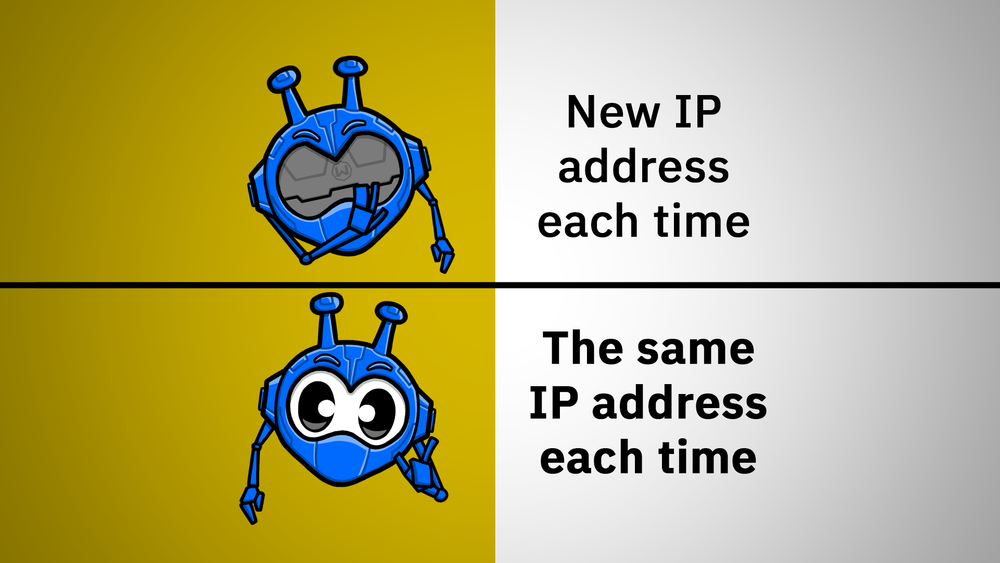Throughout the history of commerce, there have been less-than-honest folks that are happy to embellish the truth here and fabricate a clever lie there so they can make a quick buck. In ye olden days, it was the likes of the traveling “exotic goods” salesman with a cart full of strange items of which he makes dubious claims of value, history, or even magic.
In modern days, some marketers still embellish, obfuscate, and lie. In the VPN industry, one of the most common baits by shady VPNs is how many countries they have server locations in.
The Virtual Server Fakeout

The inflated country counts are facilitated by virtual server locations. A virtual server location is one for which the actual physical server exists in a location that is not the claimed/advertised location. Most providers operating virtual server locations run the actual server in countries with low bandwidth costs while faking the location with false IP WHOIS data to make it appear that it is elsewhere.
This results, first and foremost, in subpar performance for users - a reality conveniently ignored by our competitors for a few extra bucks at the cost of honesty. There are more insidious considerations for some users, though, like potential legal repercussions for anyone looking to connect to servers in specific countries because of privacy protections afforded by the laws of the said country.
Take ExpressVPN’s “Taiwan” location, for example: a protester/activist from Hong Kong might want to connect to “Taiwan” to go the extra mile and choose a VPN endpoint outside the jurisdiction of Hong Kong / China. They continue to pursue their activism whilst believing they have an extra layer of protection against, for example, wiretapping only to find they have been misled into connecting to a VPN server located physically in Hong Kong. This might not be an issue that affects most users but the disregard for user agency is still shameful.
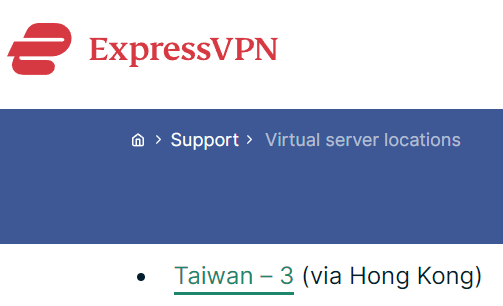
Looking at Latency Impact
To demonstrate the point, ExpressVPN specifies that its Ecuador location is actually hosted in Brazil. Windscribe’s Ecuador location on the other hand is actually hosted in Ecuador.
For an ExpressVPN user located in Ecuador and wanting to connect to a server in Ecuador (for the lowest latency), connecting to ExpressVPN’s “Ecuador” location would result in a client-server connection latency of >150 ms (since the client is in Ecuador, but the server is in Brazil).
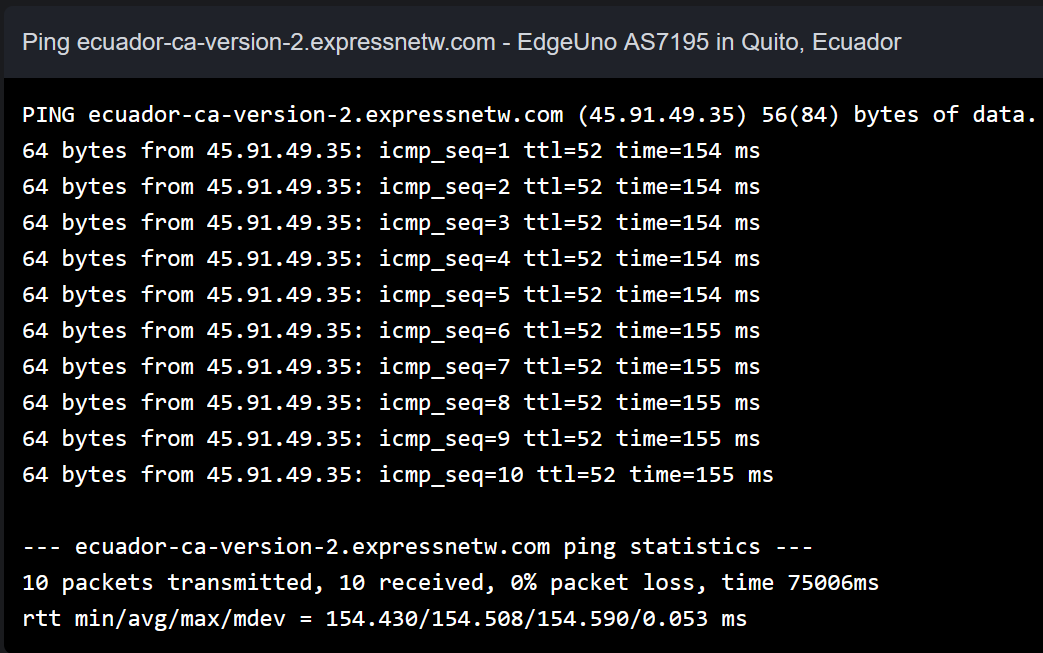
In contrast, for a Windscribe user located in Ecuador who wants to connect to a server in Ecuador (for the lowest latency), connecting to Windscribe’s Ecuador location would result in a client-server connection latency of <1 ms (since the client is in Ecuador, and the server is also in Ecuador).
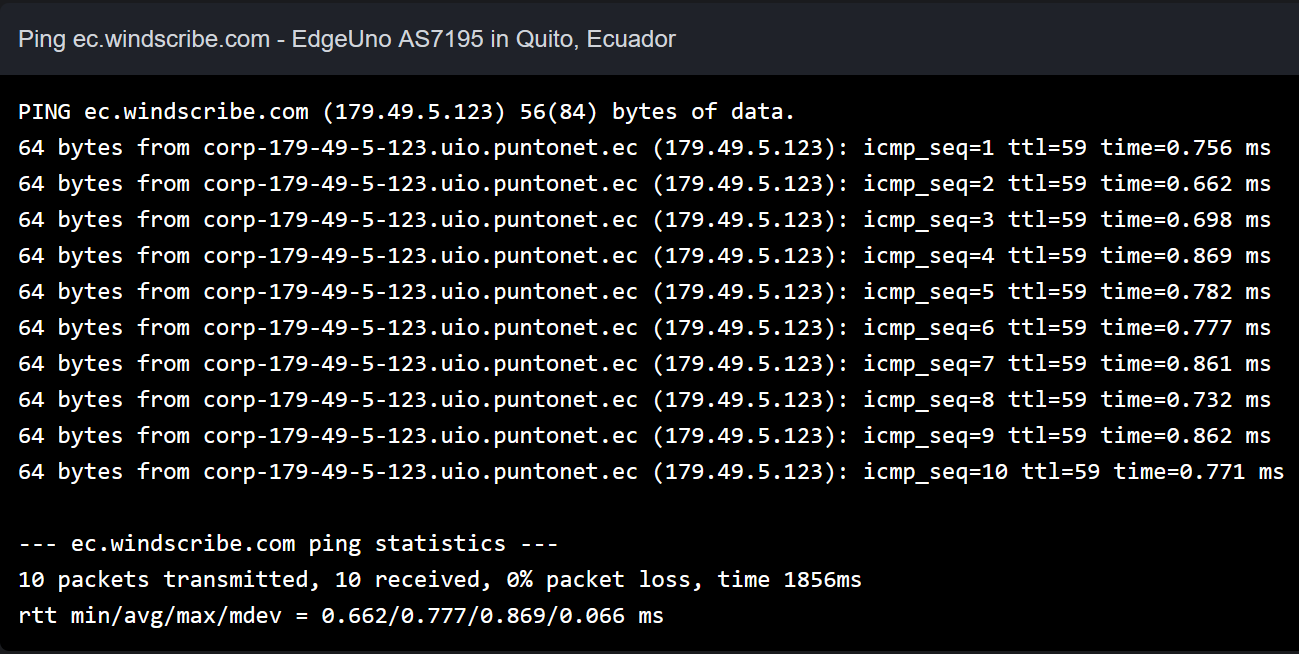
Hat-tip to the folks at mtr.tools - the tool that made this demonstration possible by playing the Ecuadorian user in our example!
The Exposé
Now that we have established how the use of virtual server locations benefits the marketing team of the VPN company providing it (and possibly their infrastructure costs by not having to pay for premium bandwidth) at the cost of impeded performance for its users, let’s analyze how many countries some of our competitors actually operate physical servers in:
ExpressVPN
Claimed number of countries: 94
Countries that are virtual server locations: 47
Number of countries with physical servers: 94 - 47 = 47
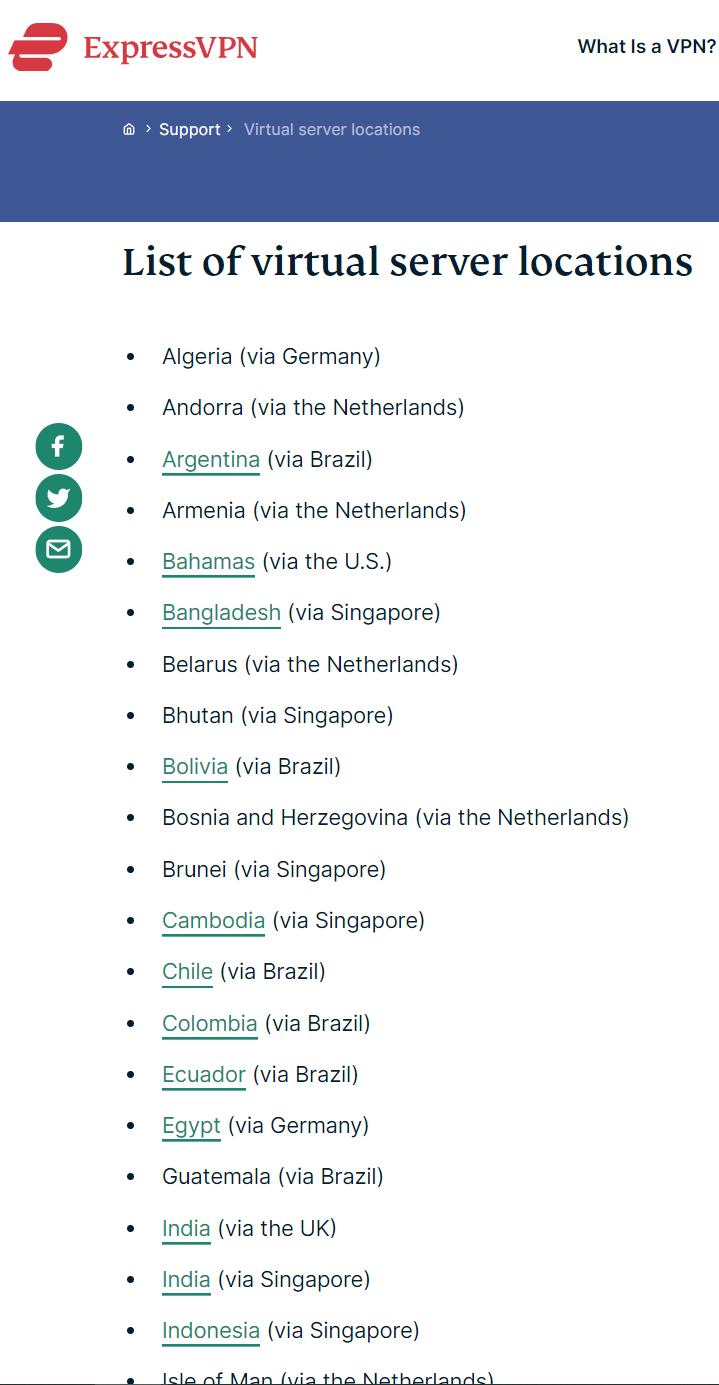
Surfshark
Claimed number of countries: 100
Countries that are virtual server locations: 43
Number of countries with physical servers: 100 - 43 = 57

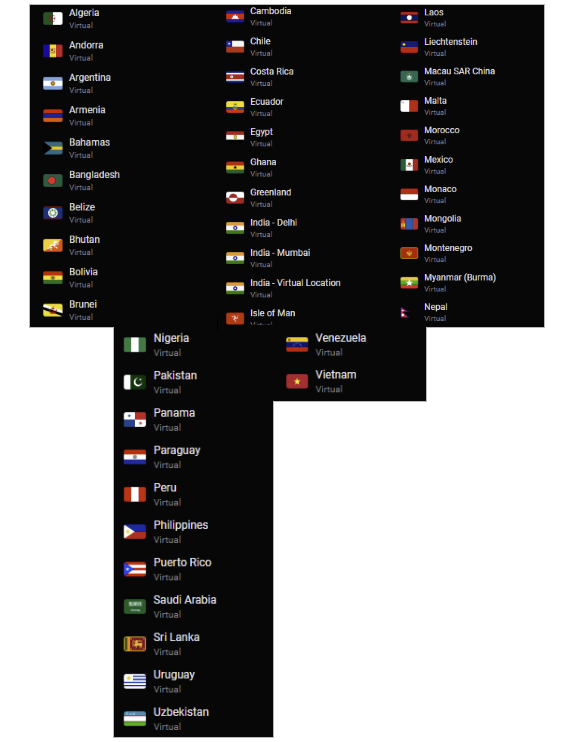
While it’s concerning that Surfshark made no attempt to differentiate between physical and virtual server locations on their website, I would like to thank Jimmy from Surfshark support for going the extra mile and pulling this list from the Surfshark app.
ProtonVPN
Claimed number of countries: 67
Countries that are virtual server locations: 17
Number of countries with physical servers: 67 - 17 = 50
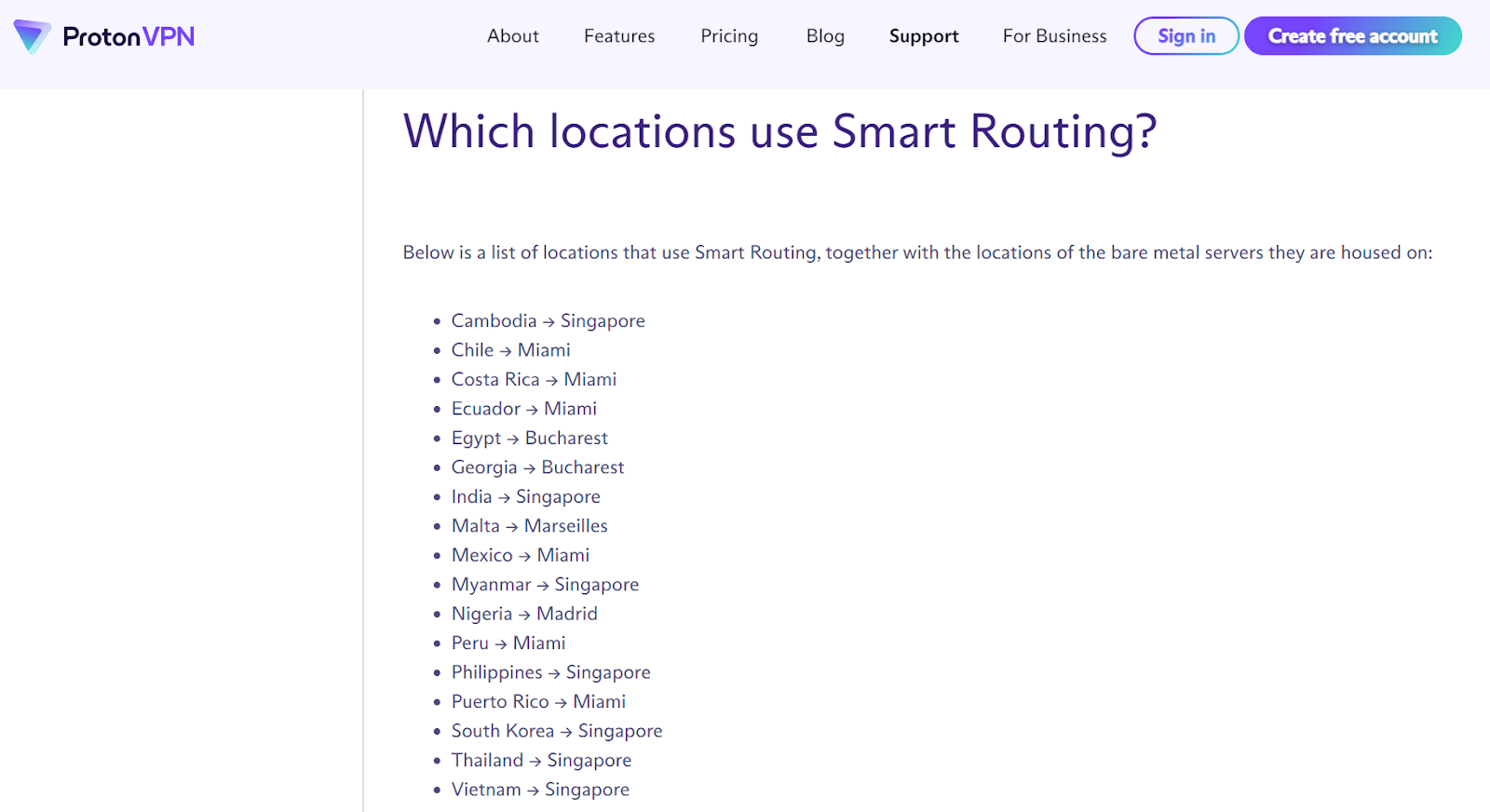
Credit to ProtonVPN for highlighting the benefit of the cheaper bandwidth costs of virtual servers.

CyberGhost VPN
Claimed number of countries: 91
Countries that are virtual server locations: 32
Number of countries with physical servers: 91 - 32 = 59
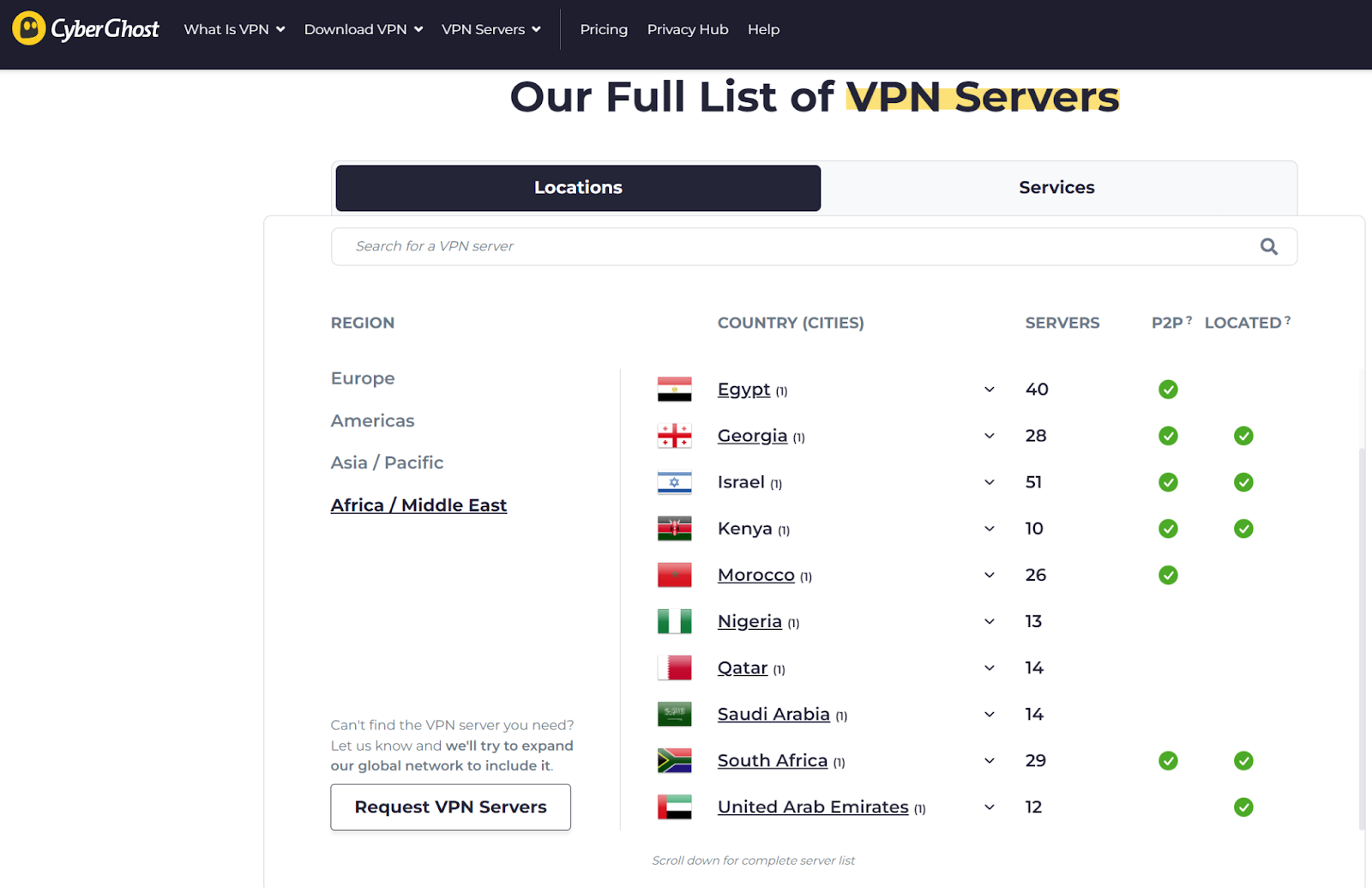
Hide.Me
The list goes on, and I could do this all day. To the aforementioned providers’ credit - they in some capacity do disclose their use of virtual server locations. Some others like Hide.Me, however, use virtual server locations despite claiming not to.
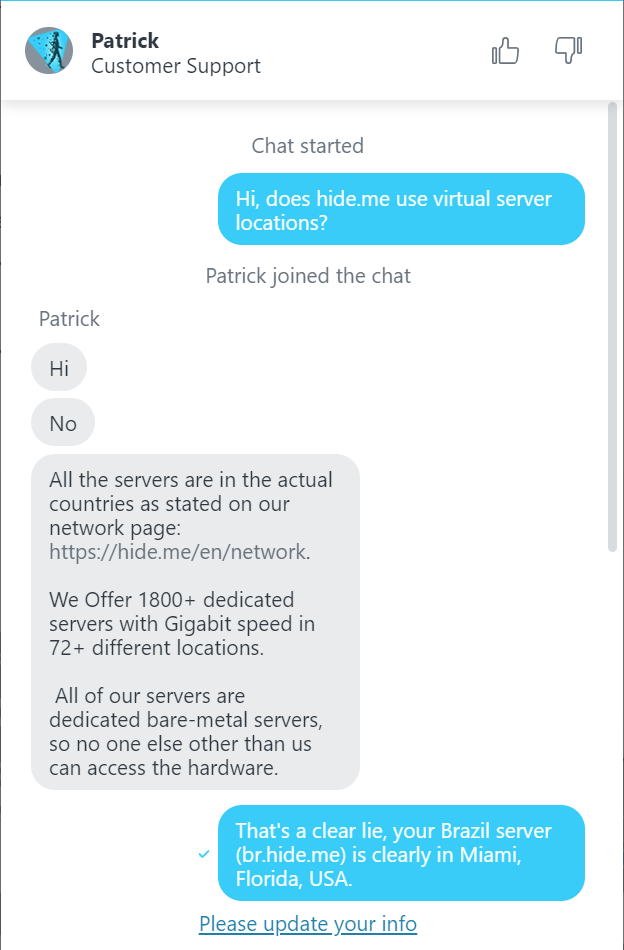
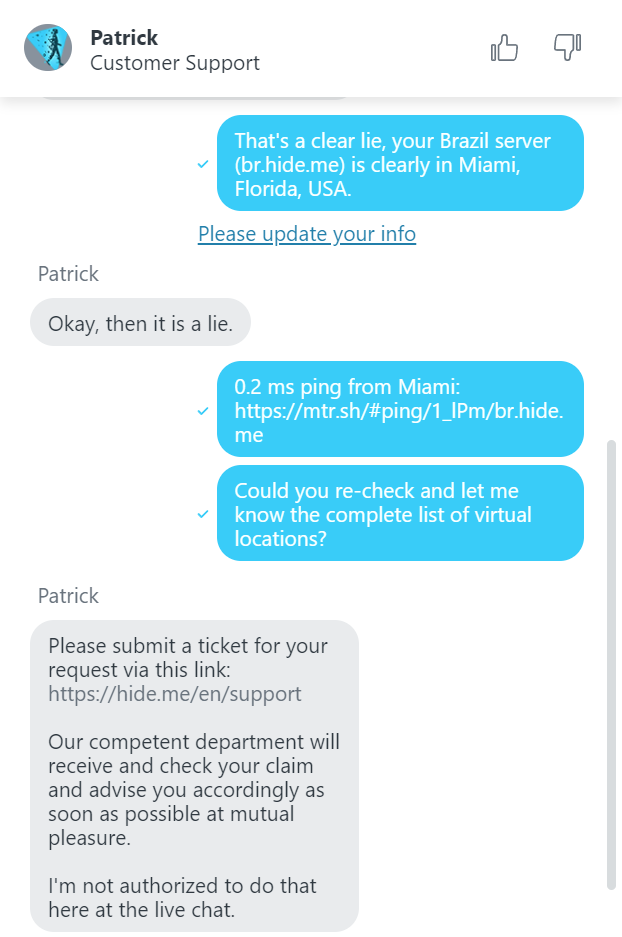
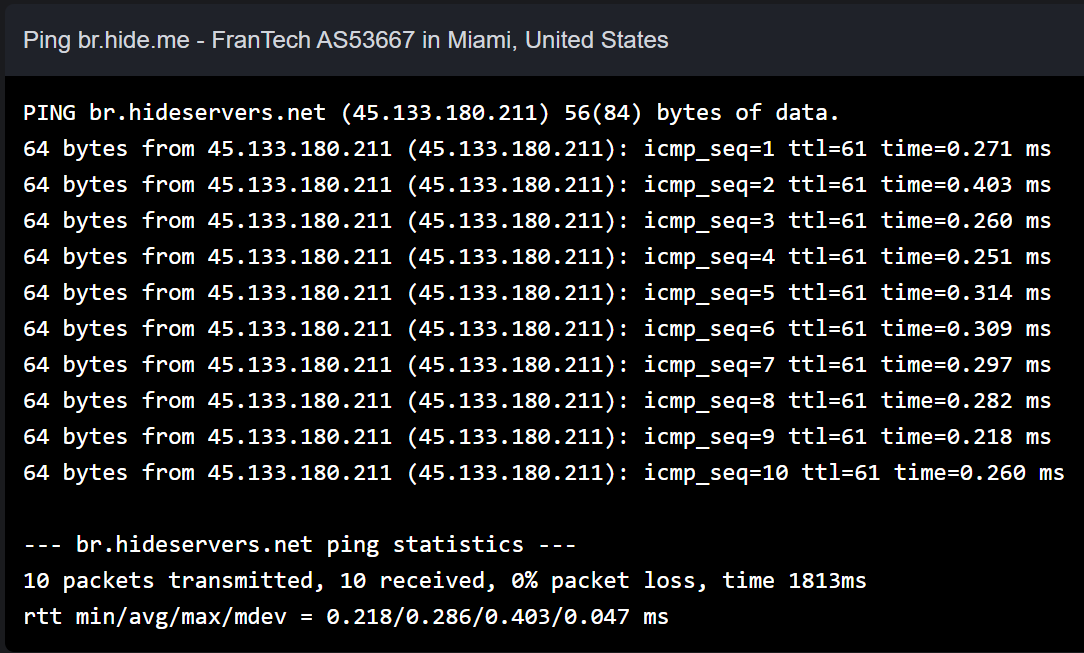
Windscribe VPN
Claimed number of countries: 69 ( ͡° ͜ʖ ͡°)
Countries that are virtual server locations: 1 (Fake Antarctica)
Number of countries with physical servers: 69 - 1 = 68
With servers physically located in 68 countries, we are confident that we provide our users access to physical servers in more countries than any competitor of ours.
Windscribe Has Your Back
We hope that this foray into the murky world of VPN marketing helps shed some light on one of the most common tricks that some companies perform. Here, at Windscribe, we are committed to transparency and integrity and will always endeavor to keep our claims factual - like how we have more physical server locations than all of the competitors listed above (and more) despite their inflated numbers!
If you’d like to get access to the most extensive and diverse VPN server network out there, then sign up for Windscribe Pro today.
Disclaimer: Data is valid as of 16 May 2023.


